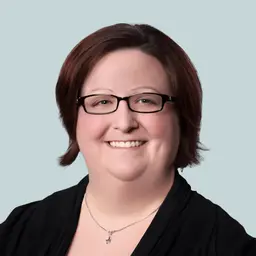Overview
- The 2024 Medicare Physician Fee Schedule includes opportunities for new revenue through codes for caregiver training, community health integration, and more, which can help offset the 3.4% payment cut.
- A new CMS rule aims to ease prior authorizations through interoperability standards and faster turnaround times, seeking to reduce administrative burden.
- CMS announced a new 8-year payment model launching in fall 2024 targeting Medicare and Medicaid patients, designed to better coordinate care and improve outcomes for those with behavioral health needs.
Welcome to Vital Signs: a monthly roundup of RCM news for independent practices.
We’re one month into 2024, and the revenue cycle management (RCM) news cycle has been busy. There are new medical codes to learn, new regulations and payment models coming down the pike, and other insights that can help drive operational and RCM improvements. Here are 6 RCM stories to put on your radar.
Download your free resource now
Access it instantly — just complete the form

1. New revenue opportunities took effect January 1, 2024
The specifics: Effective January 1, 2024, Medicare will pay for several new services, including caregiver training services, community health integration, social determinants of health risk assessments, principal illness navigation, and evaluation and management complexity add-on services. Note that some of these services are time-based, and specific payment varies by service:
- Caregiver training pays at least $56 for individual training, and there is also a billable code for group training.
- Community health integration pays at least $79 per calendar month.
- SDOH risk assessments pay about $19 per assessment with a limit of 2 per calendar year.
- Principal illness navigation pays at least $79 per calendar month.
- E/M complexity add-on services pay about $16.
Why it matters: The calendar year 2024 Medicare Physician Fee Schedule includes a 3.4% payment cut, and these services and corresponding medical codes represent revenue opportunities to help offset some of that decrease.
“Effective January 1, 2024, Medicare will pay for several new services.”
What’s next: Decide whether it makes financial and operational sense to start providing and billing for these new services, some of which may require the help of patient navigators and certified peer specialists, or community health workers. Here’s a good summary of the final rule and new services. Also, familiarize yourself with the newly published MLN Matters article 13473 regarding HCPCS code G2211.
2. New final rule streamlines the process for prior authorizations
The specifics: A new rule published earlier this month requires certain payers (including Medicare Advantage plans) to implement interoperability standards to ease electronic exchange of information for prior authorizations. The rule also requires certain payers to send decisions within 72 hours for expedited requests and seven calendar days for standard requests. It also requires certain payers to be more transparent about denials for prior authorization and report certain metrics annually on public websites. Most provisions in the rule take effect in 2026.
Why it matters: Prior authorizations continue to create significant financial and operational challenges for today’s medical practices. This rule seeks to change that, and it could reduce the administrative burden significantly.
What’s next: Do what you can to streamline prior authorizations now, but also start thinking ahead about how you’ll manage the process once information is more transparent.
3. Transformative health IT change is necessary for advanced primary care, one study found
The specifics: A recent study found that while the CPC+ program promoted technological improvements (i.e., advances in EHR registries and dashboards) and strengthened relationships between practices and vendors, there was less transformative health IT change than expected, particularly for interoperable health information exchange.
Why it matters: It highlights the need for continued collaboration among health IT vendors, practices, policymakers, and payers to address information exchange and communication.
What’s next: The authors of the study encourage physicians and others to reflect on recent experiences with CPC+ and other advanced primary care programs to identify the most important primary care health IT functionalities. For helpful input when making this assessment, be sure to check out this report outlining key primary care digital functions.
Download your free resource now
Access it instantly — just complete the form

4. Patients use telehealth most commonly because physicians recommend or require it, one study found
The specifics: A recent study found that the most common reason for using telehealth was recommendation or requirement by a clinician.
Why it matters: We all know that telehealth use increased during the pandemic, but studies like this provide insight into patients’ motivations for continued use of the technology.
“Think about how patients can benefit most from telehealth.”
What’s next: Think about how patients can benefit most from telehealth. Then, make tailored, person-centered decisions when recommending telehealth vs. in-person visits.
5. CMS announces new payment model to advance behavioral health integration
The specifics: CMS recently announced a new payment model to support behavioral health practices to provide integrated care and help meet people’s behavioral and physical health and health-related social needs. The payment model, which launches in the fall of 2024, targets individuals with Medicare and Medicaid. CMS anticipates the program will run for up to 8 years in 8 states.
Why it matters: The impact of behavioral health conditions is significant among the Medicare and Medicaid populations. Twenty-five percent of people with Medicare experience mental illness, and 40% of adult people with Medicaid experience mental illness or substance use disorder. This payment model is an opportunity to keep people out of the emergency department, ensure better care management and coordination, and improve overall health.
What’s next: Read up on the payment model, and stay tuned for a Notice of Funding Opportunity set to be announced in the spring of 2024.
6. Medical practices can help address one of the biggest social determinants of health: Lack of transportation
The specifics: Transportation is a leading social determinant of health (SDOH), which is why the Centers for Disease Control & Prevention (CDC) has taken a closer look at its impact on healthcare visits. In this recent data brief, the CDC says about 6% of US adults were recently without reliable transportation, potentially causing negative health outcomes.
Why it matters: Transportation may play a key role in community and individual health because people without reliable access can miss out on medical care. These missed opportunities may promote care gaps that ultimately increase costs. In addition, patient no-shows disrupt the schedule and can even perpetuate patient care access challenges.
Learn about how transportation impacts patient appointments in our "Tackling patient no-shows and cancellations" eBook.
“Transportation may play a key role in community and individual health because people without reliable access can miss out on medical care.”
What’s next: Think about ways in which your medical practice can help address this problem. For example, this guide from the American Hospital Association includes several ideas that medical practices may be able to adapt to their own operations.
Simply screening for SDOH, including lack of transportation, is always a great start. Here’s a toolkit from the American Medical Association to help jumpstart the effort. Here’s another article that includes patient resources and other helpful advice for SDOH screening. Look for local transportation resources in your area and refer patients when possible.
Find out how to boost your practice's financial health by improving your revenue cycle management.
Download your free resource now
Access it instantly — just complete the form

You might also be interested in
Crack the code for beating medical billing challenges with this free workbook — which provides tips on improving patient collections, streamlining claims submissions, and reducing rejections and denials.






